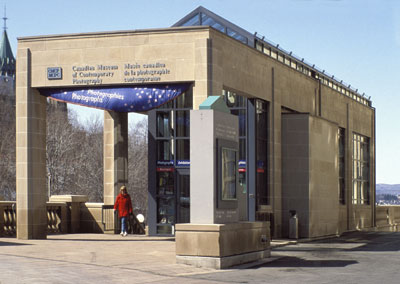Throughout its history the building has been altered significantly, but some of the original design is still visible in the Atrium. This magnificent space extends over four storeys above the ground floor and features skylights that provide natural lighting. A beautiful staircase rises and splits to reach the second level. The relatively austere Atrium highlights the two-storey tall stained-glass window in the Atrium as well as three intricate stained glass windows over nearby doors. Two big pre-historic flying reptiles, Pteranodons, are suspended from the ceiling and provide an imposing view.
The building has an interesting history: in 1916 it became the emergency headquarters for the Canadian government after a fire had destroyed the Parliament Buildings. Both the House of Commons and the Senate were located here for a time and Prime Minister Sir Wilfrid Laurier lay in state here after he had passed away. Finally in 1988 the Castle became the exclusive home of the Canadian Museum of Nature and at present a major renewal project is underway.

The amazing Atrium
In my case I was here to see a special internationally travelling exhibition entitled Fatal Attraction. Presented in English, French and Dutch, this exhibition was developed by the Royal Belgian Institute of Natural Sciences in Brussels together with the Musee Nationale d’Histoire naturelle in Paris and Naturalis, the National Museum of Natural History in Leiden in the Netherlands.

A mandrill in a seductive state
Fatal Attraction explores the language of love in the animal world. It is an interactive, light-hearted exhibition that focuses on courtship rituals in different species, including mammals, birds, fish, amphibians and insects. The science of propagation is explored in a humorous way. 100 specimens from various European natural history collections provide an up-close look at the world of animal seduction.
All sorts of mating signals are explored since the animal world features a wide range of tactics to attract a mate: from songs, calls, positions, mimics, vibrations, light codes, bright or flashy colours, scents and even sounds that we humans are unable to detect. Many interactive displays allow you to push buttons to explore different mating calls, light or sound signals for animal species living on land and in the water.

A peacock tries to impress
The exhibition also reveals that sometimes mating is risky business – predators might also be attracted to animals who are trying to seduce their mates. Some of them even imitate courtship signals in order to catch their prey! Human courtship is explored in the fourth and final portion of the exhibition which makes you realize that we are not all that different from our animal cousins. Fatal Attraction will stay at the Canadian Museum of Nature until September 4, 2006 when it moves to the Biodome in Montreal.
On October 20, 2006, new permanent galleries will open on the west side of the Museum: the Mammal Gallery, Bird Gallery, Talisman Energy Fossil Gallery, and Discovery Zone with programming and high-definition nature movies. There will also be a travelling exhibition on Einstein. The east side of the Museum will then close to the public until 2009 for the installation of new galleries. Check out nature.ca to learn more about the Canadian Museum of Nature, its collections, special Web sites, and its Renewal project.
I had fun at the Canadian Museum of Nature exploring the world of animal seduction, and my next item on the agenda was an expoloration of Canadian nature: Gatineau Park, Ottawa’s nature playground…





